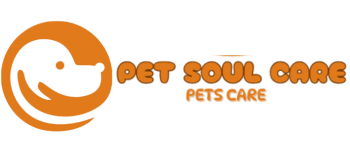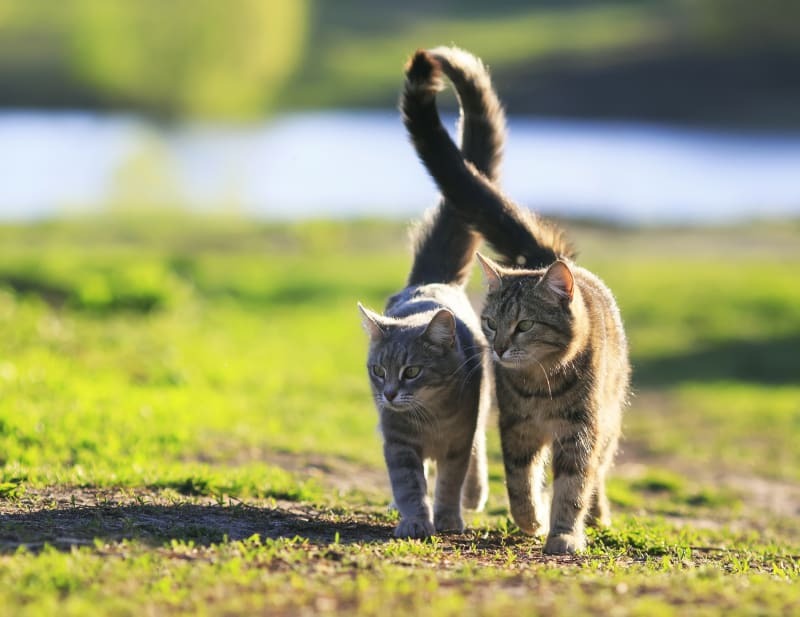What Does a Cat Tail Wag Mean? unleashing the Secrets Behind nimble Tail Language
pussycats communicate a lot through their body language. Their tail movements are among the most suggestive signals they use. what does a cat tail wag mean? you are not alone, If you’ve ever wondered. Understanding what your nimble friend is trying to tell . you can consolidate your bond and ameliorate your capability to watch for them. In this composition, we’ll explore the colorful tail wags. what they signify, and how to interpret your cat’s signals directly.
preface decrypting the riddle- What Does a Cat Tail Wag Mean?
Unlike tykes , who are famed for their enthusiastic wagging. A cat’s tail wag can be subtle, nuanced, and environment-dependent. So, what does a cat tail wag mean? It depends on the situation, the position of the tail, and the overall body language of your cat.
Understanding these signals helps you interpret. whether your cat is happy, anxious, irked, or seeking attention. It also enables you to respond meetly. creating a more harmonious relationship with your pet. Interpret your cat’s tail movements is an essential part of responsible pet power. It enhances your capability to read their emotional state. which is pivotal for their internal health and well- being. This skill becomes especially important when introducing new , callers, or changes .
The Significance of Tail Movements in pussycats
pussycats use their tails as a form of non-verbal communication. They can shoot complex dispatches through colorful tail movements. Which can include wagging, puffing up, fluttering, or entwining.
Why Do pussycats Wag Their Tails?
A tail wag in pussycats may feel analogous to a canine’s wag, but the meanings are relatively different. pussycats tend to wag their tails to convey a range of feelings, from vexation to curiosity. occasionally, it’s a way for them to tone- soothe or concentrate their energy pussycats . occasionally wag their tails in situations where they’re both interested and conservative. similar as when stalking prey or observing a new terrain. The tail serves as an extension of their mood, furnishing vital suggestions for observant possessors.
The wisdom Behind nimble Tail Communication
The tail acts as an extension of their nervous system, replying reflexively to their passions and terrain. For illustration, an agitated or nervous cat might flutter or lash its tail. It also emphasizes the significance of environment. Just like mortal body language, these signals need to be interpreted in confluence with other cues.
Common Types of Cat Tail Wag and What They Mean
Let’s examine the most common tail movements and what they reveal about your nimble’s mood. Feting these movements helps to foster better relations . And ensures you’re responding in a way that aligns with your cat’s passions.
1. Gentle Tail Flicking or shuddering
- What it looks like Slight, quick movements of the tip of the tail.
- What it means Your cat is focused or interested. It could be watching commodity interesting, similar as a raspberry outside the window, a ray pointer, or a moving nonentity. this gentle shuddering occurs when the cat is stalking or preparing to hurdle.
- fresh perceptivity If your cat’s tail is shuddering while relaxed, it may be a sign of expectation. This is common during play or when your cat is trying to get your attention for commerce.
- How to respond If your cat is observing commodity calmly, give it space. However, encouraging playtime with toys can help expend their energy, If it’s a sportful mood. Be aware not to disturb their focus if they feel intent on stalking, as breaking attention can lead to frustration.
2. Slow Wagging or Swishing
- What it looks like A slow, metrical sway from side to side.
- What it means
Your cat is bothered or irked. This is frequently accompanied by other signals like a tense body, flattened cognizance, or an arched back. However, this tail movement enhances their communication. If your cat is swatting or hissy fit.
- fresh perceptivity
occasionally, a slow wag signals discomfort with a particular person or situation. It can also indicate that your cat is overstimulated from petting or playing and needs a break.
- How to respond
Admire your cat’s space, and avoid approaching or startling it . However, separate them to help conflict, If your cat is near another pet or person.
3. Puffing Up the Tail( Fluffed Tail)
- What it looks like
The tail appears much larger, bushy, and puffed out, frequently like a bottle encounter.Your cat feels hovered , spooked, or protective.
- fresh perceptivity
Puffing up the tail is an evolutionary survival strategy. making the cat look larger and more intimidating to bloodsuckers or pitfalls. It frequently occurs in response to strange surroundings, loud noises, or unanticipated callers.
- Do n’t try to approach or console it during this state, as it could escalate to aggression. Give your cat a quiet, safe place to retreat and recapture countenance.
4. Vertical Tail with a Slight wind or Tip entwining
- What it looks like :The tail is held upright, occasionally with a slight wind at the tip.
- What it means :This is generally a sign of a happy, confident cat. It indicates relaxation and pleasure. occasionally, pussycats hold their tails high when chatting their favorite person.
- fresh perceptivity :An upright tail with a gentle wind resembles a” smile” in nimble body language
- How to respond :These are friendly signals — approach gently if the cat is seeking commerce. Offering petting or engaging in play can consolidate your bond during these moments.
5. Rapid Tail Swishing or fluttering
- What it looks like Fast, sharp movements of the tail from side to side. High frustration or agitation.
- What it means Your cat might be irked, overstimulated, or bothered. especially if combined with other signs like flattened cognizance or dilated pupils.
- fresh perceptivity
This tail flicking could be a precursor to scratching or smelling if encouragement persists. It occurs during grooming, exposure to loud noises. when a cat is exorbitantly tolerant but reaches their limit.
- How to respond
Pay attention to other body language. However, smelling, or appears tense, If your cat is fixing aggressively. Avoid petting during high agitation as it may worsen the situation.
6. Tail Tucking or Lowered Tail
- What it looks like The tail is put away between the legs or held low against the body.
- What it means Fear, submission, or torture. This position signifies a vulnerable state, frequently coupled with crouching, flattened cognizance.
- fresh perceptivity
Tail- put away constantly occurs when a cat encounters a new terrain, strange creatures, or when it’s in pain or feeling ill. It’s a tone-defensive posture.
- How to respond Approach cautiously, speak vocally, and make your cat feel safe. Do n’t discipline or scarify your cat, as this can support fear.
7. entwining or Swirling of the Tail
- What it looks like The tail ringlets around the body or sluggishly twirls in a indirect stir.
- What it means pleasure or calmness. pussycats frequently do this when they’re relaxed, especially when lying down or sleeping.
- fresh perceptivity This tail movement can be a sign the cat feels secure and trusts its terrain. It’s common during fixing or when resting on a favorite spot or stage. You can gently gentle or talk to it, knowing it’s in a peaceful state.
How Different Tail Positions round Overall Body Language
Then are some scripts to consider
- Erect tail with relaxed body Happy, confident, and open to commerce.
- Erect tail with fluffy fur Alert or protective, motioning the need for space.
- Low or put away tail with dilated pupils spooked, amenable, or in pain.
- Tail wrapped around the body
Content, trusting, and relaxed. Combining signals helps help miscommunication and enhances your understanding of their emotional state.
minding for a Cat Grounded on Tail Signals
Knowing what a cat tail wag means allows you to respond meetly, strengthening your bond and icing your cat’s well- being. Then are some practical tips
- Encourage positive relations
A tail held high signifies trust and happiness; during these times, gently approach or offer treats. . Always consult a veterinarian if commodity seems unusual.
- produce a safe terrain
furnishing caching spots, toys, and calm spaces helps reduce stress . And allows your cat to express its natural actions comfortably.
Conclusion The Language of the Tail
what a cat tail wag means transforms your relationship from bare observation to true communication. Each wag or position is a piece of the mystification, revealing your cat’s mood, wishes, or enterprises. Flash back, every cat is unique — their tail actions may have substantiated meanings . specifically signify in their personality and diurnal life. With tolerance, thickness, and genuine interest, you will come a master at decrypting . Your nimble’s tail language, heightening your bond and enriching both your lives.




